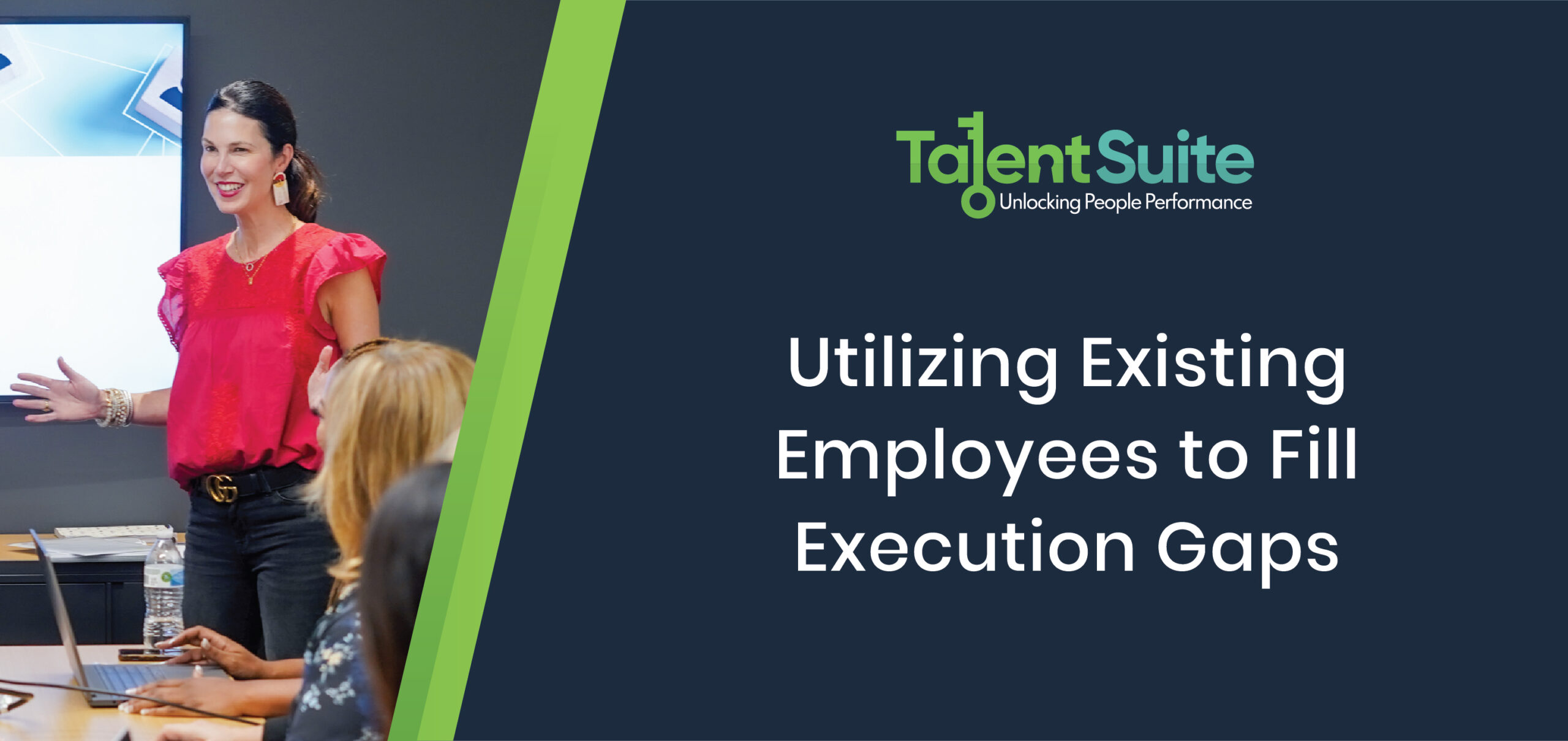
05 Apr Utilizing Existing Employees to Fill Execution Gaps
As businesses grow, they face the perpetual challenge of closing the gap between strategic objectives (“Where are we going?”) and practical execution (“How are we getting there?”).
While hiring new team members may seem like the most obvious way to meet the goals you’ve set (and the fastest way up the mountain), this strategy may not always be feasible or cost-effective.
Especially as we face a period of growing economic uncertainty—making it more important than ever to operate as efficiently as possible!—you may find that it makes more sense to analyze the workforce you already have and identify opportunities for existing employees to step up in new ways.
1. Take a good (hard) look at what’s ahead. Analyze the workforce you already have by taking a good look at your strategic priorities, what needs to be done, who is assigned to do that work and if existing team members are better suited for the task at hand.
Consider:
- Are your goals realistic? Do you have too many priorities?
- Are there tasks or initiatives planned that may actually distract from your core focus? Is there clarity on the task that needs to be done to achieve those few priorities?
- Does it make sense to shift manpower and other resources to these activities in light of the current economic uncertainty?
2. Look right under your nose, but think outside the box. As you assess your goals and your team, it’s important to think creatively about how to solve your problems with the talent you already have. There are two approaches that when used together prove highly effective: qualitative insights and quantitative data.
Qualitative insights can be used to gain a view of your employees strengths and weaknesses and understand how to play to their strengths and potentially avoid assigning them to projects with which they are not naturally wired.
Consider:
- Have there been employees who have vocalized a desire to try something new, or who have prior experience that lends itself well to your needs?
- Are there A-players who have proven they’re ready for more or who have stood out as of late?
Quantitative data can be found using tools like the Predictive Index Behavioral Assessment. This tool can be powerful in terms of identifying key competencies and opportunities for growth. PI data you can understand someone’s natural wiring and what they can do and perhaps where they are being underutilized or over taxed.
Consider:
- Are there ways that you could reassign team members to new priorities in order to boost productivity and happiness?
- Are there hidden gems just waiting for the opportunity to step up to the plate, or low-performers who you know have potential but have simply struggled to find their groove in their current placement?
- Are there A-players being overutilized and overworked to compensate for others?
Ensure you’re assessing employees based on how well their skills can lend themselves to the current needs of the business, and how well they are currently being utilized. Remember: the goal is to optimize performance and close execution gaps. The decisions we make don’t exist in a vacuum, and can have a ripple effect across the entire company.
3. Foster a culture of continuous improvement. Keep in mind that major change doesn’t happen overnight—and just as you’d expect a standard ramp-time for a new employee, you should expect the same from an existing employee who has been placed in a new role.
Consider:
- Have you given your employees the resources they need to succeed in a given role or within a given project?
- Are you instilling lean behaviors in leaders at all levels? Try creating a development plan of a self-rating system consisting of observable behaviors. If there is no behavior change, then there will be no improvement in practice.
- Do your employees understand how work is performed, are they asking open-ended questions to remove possible barriers that could hinder them from solving problems?
It’s also not a one-and-done solution: continual investment in employee development is key to improving performance, optimizing each role, and closing productivity and execution gaps. This can look like ongoing trainings (whether in-house, online, or through a third-party), as well as simply staging regular check-ins with employees where they are safe to provide honest feedback.
Hiring new employees may not be in the cards right now—but that doesn’t mean you can’t make big things happen this year. When done intentionally and strategically, leveraging the skillsets of your existing employees to close execution gaps can be a cost-effective and efficient way to optimize performance and improve business outcomes.
